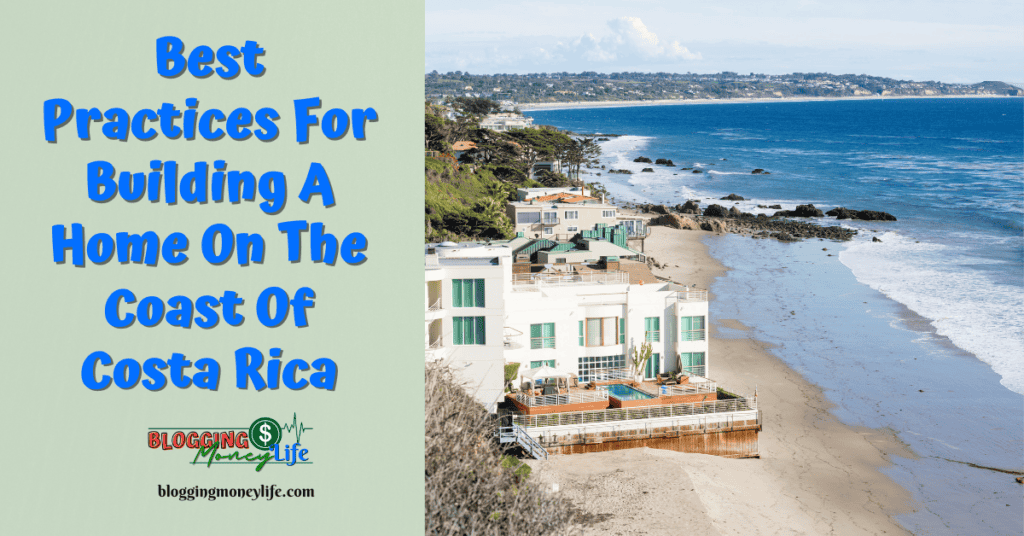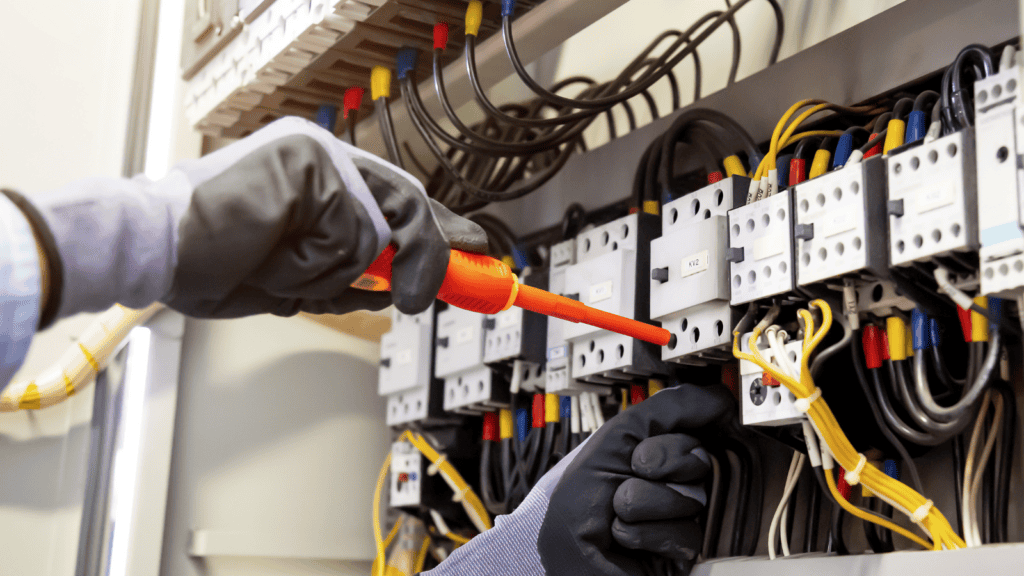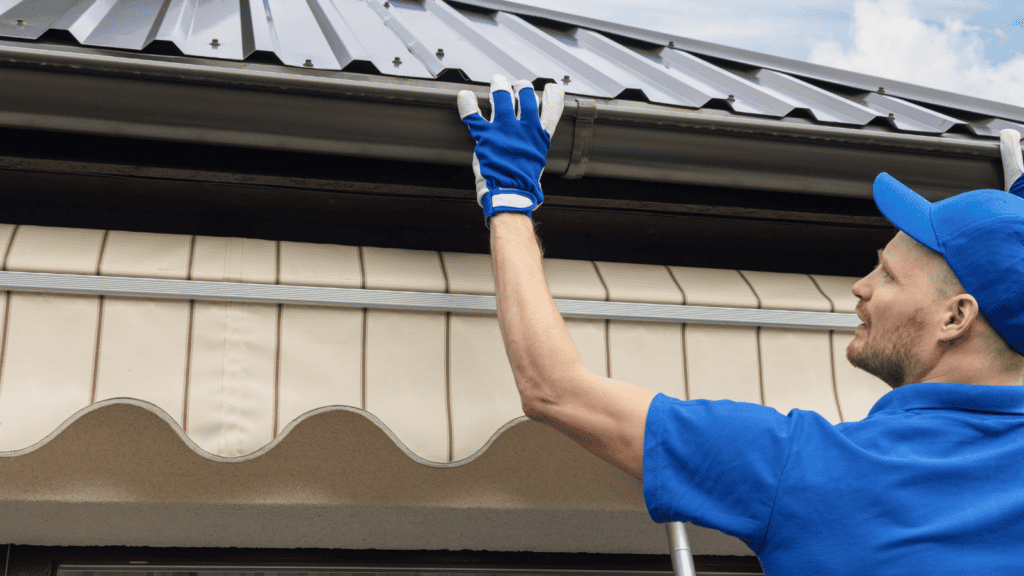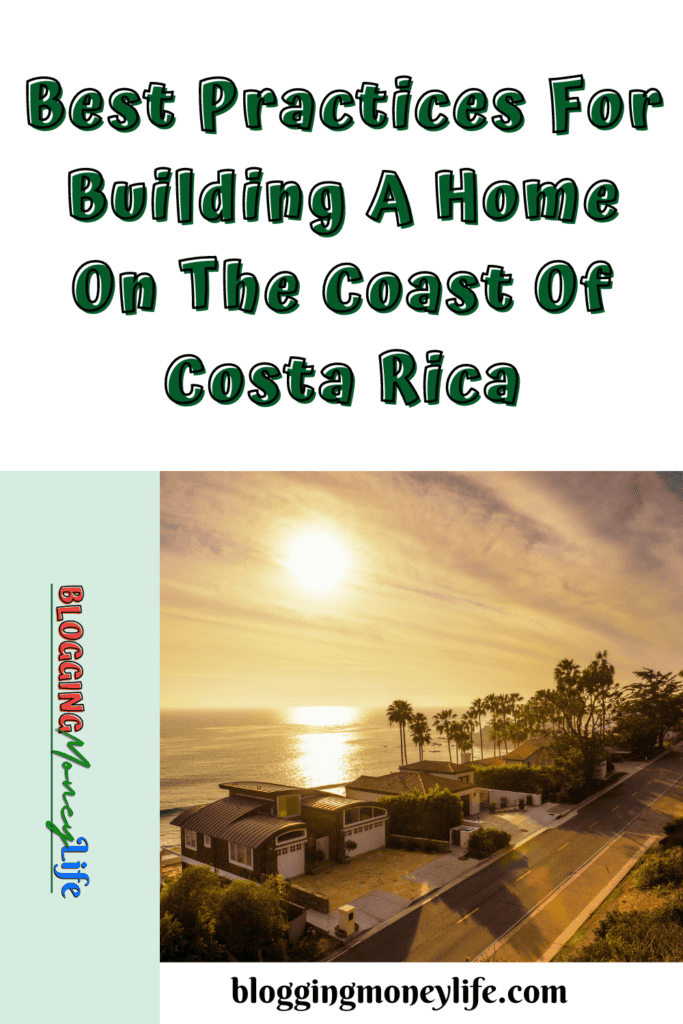Best Practices For Building A Home On The Coast of Costa Rica

Building a home on the coast of Costa Rica can be a dream come true for those seeking to live in a tropical paradise surrounded by nature’s splendor. However, this dream can become a nightmare of repairs and remediations without careful consideration during the design and construction phases. Costa Rica’s unique geography and micro-climate pose challenges that must be addressed during construction to ensure a coastal home’s safety, comfort, functionality, and sustainability. Here are some of the best coastal construction practices to incorporate into your Costa Rica Dream Home:
𝟏. Choose the Right Location For Building A Home On The Coast of Costa Rica
When selecting a site, choose a location above the floodplain with adequate drainage and legal access to water and electricity. Avoid areas designated as protected ecological zones. Before purchasing land, conduct due diligence with a lawyer’s assistance.
Additionally, consult with local professionals such as coastal engineers, architects, or builders familiar with your area. They can offer valuable insights regarding topography, potential storm surges, and sun movement to inform your decision.
𝟐. Conduct a Geotechnical Study
Assess soil stability to determine the appropriate foundation design before purchasing a lot. If you plan to build on the side of a cliff, conduct a slope stability analysis to assess the risk of landslides during the rainy season.
𝟑. Elevate Your Home
Elevate your homes by raising the foundation at least 12″ (30 cm) above the natural surrounding grade to safeguard against flooding, storm surges, and water runoff. In flood-prone areas, consider constructing on pilings for additional protection. Additionally, ensure proper land grading away from your foundation and other structural components to mitigate water damage and erosion. To understand the steps and components of constructing a sound foundation for your home, check out my “𝑩𝒖𝒊𝒍𝒅𝒊𝒏𝒈 𝒀𝒐𝒖𝒓 𝑯𝒐𝒎𝒆𝒔 𝑭𝒐𝒖𝒏𝒅𝒂𝒕𝒊𝒐𝒏” article.
𝟒. Safeguard Your Electrical System

Install surge protection, waterproof outdoor circuits, and corrosion-resistant components, and consider an off-grid or emergency power backup system. For more information, refer to my article “𝑯𝒐𝒘 𝒕𝒐 𝑫𝒆𝒔𝒊𝒈𝒏 𝒀𝒐𝒖𝒓 𝑬𝒍𝒆𝒄𝒕𝒓𝒊𝒄𝒂𝒍 𝑺𝒚𝒔𝒕𝒆𝒎 𝒇𝒐𝒓 𝑪𝒐𝒔𝒕𝒂 𝑹𝒊𝒄𝒂”.𝟓. 𝐈𝐧𝐬𝐭𝐚𝐥𝐥 𝐚 𝐏𝐨𝐭𝐚𝐛𝐥𝐞 𝐖𝐚𝐭𝐞𝐫 𝐒𝐭𝐨𝐫𝐚𝐠𝐞 𝐒𝐲𝐬𝐭𝐞𝐦: To ensure a reliable water supply, install a potable water storage system consisting of properly rated and sized storage tanks.
These tanks serve as reserve systems, particularly crucial during water conservation hours in the dry season. Additionally, consider incorporating water filtration systems to guarantee the safety of your drinking water. For further insights, refer to my article “𝑨𝒗𝒐𝒊𝒅 𝑻𝒉𝒆𝒔𝒆 𝑪𝒐𝒎𝒎𝒐𝒏 𝑪𝒐𝒔𝒕𝒂 𝑹𝒊𝒄𝒂 𝑷𝒍𝒖𝒎𝒃𝒊𝒏𝒈 𝑭𝒂𝒊𝒍𝒔.”
𝟔. Use Resilient Materials
Employ durable materials like concrete, brick, stone, stainless steel, anti-corrosive coated metals, tempered glass, thermal reflective panels, and coatings to withstand harsh sun, weather conditions, and saltwater corrosion. For more tips on the best building practices to employ in Costa Rica, read my article “11 𝑻𝒉𝒊𝒏𝒈𝒔 𝑰 𝑾𝒊𝒔𝒉 𝑰 𝑲𝒏𝒆𝒘 𝑩𝒆𝒇𝒐𝒓𝒆 𝑩𝒖𝒊𝒍𝒅𝒊𝒏𝒈 𝒎𝒚 𝑯𝒐𝒎𝒆 𝒊𝒏 𝑪𝒐𝒔𝒕𝒂 𝑹𝒊𝒄𝒂”.
𝟕. Consider Local Building Materials
You can support the local economy and reduce transportation costs by utilizing indigenous materials like stone, wood, bamboo, and palm leaves for finishes.
𝟖. 𝐄𝐧𝐬𝐮𝐫𝐞 𝐏𝐫𝐨𝐩𝐞𝐫 𝐕𝐞𝐧𝐭𝐢𝐥𝐚𝐭𝐢𝐨𝐧
Ensure adequate ventilation and facilitate fresh airflow in the home’s living, crawl, and attic spaces to prevent mold and mildew growth.
𝟗. Follow Proper Building Techniques

Use proper insulation, seal all openings and connections between different components and materials to prevent water and insect intrusion, select roofing materials that withstand high winds, harsh sun, and blowing rain, and adhere to manufacturer installation specifications. Refer to my article “𝑪𝒉𝒐𝒐𝒔𝒊𝒏𝒈 𝒚𝒐𝒖𝒓 𝑹𝒐𝒐𝒇 𝑺𝒚𝒔𝒕𝒆𝒎 𝒇𝒐𝒓 𝑪𝒐𝒔𝒕𝒂 𝑹𝒊𝒄𝒂.”
𝟏𝟎. Consider Sustainable Building Practices
Reduce environmental impact by incorporating renewable energy sources like solar panels, water-saving fixtures, natural building materials & finishes, and passive solar design techniques to reduce energy consumption in Costa Rica’s hot and humid climate.
𝟏𝟏. Work With Local Professionals
Collaborate with experienced local architects, designers, engineers, and builders familiar with the unique challenges of building in your area on the Costa Rican coast. Refer to my article. “𝑪𝒉𝒐𝒐𝒔𝒊𝒏𝒈 𝒀𝒐𝒖𝒓 𝑩𝒖𝒊𝒍𝒅𝒆𝒓 𝒊𝒏 𝑪𝒐𝒔𝒕𝒂 𝑹𝒊𝒄𝒂” for the essential vetting in interview questions to ask.
𝟏𝟐. Work with a Reputable Construction Owner’s Representative
Enlist the services of a reputable construction consultant to incorporate North American building standards, oversee accounting, aid in decision-making, ensure compliance with industry and manufacturing standards, perform quality & compliance inspection, and provide you with peace of mind throughout the building process. To learn how an Owner Rep can help your Costa Rica Constion project, read my article: “What is Residental Construction Owner’s Representative.” To understand what terms should be included in a Construction Contract that will protect your interests, read my “10 𝑬𝒔𝒔𝒆𝒏𝒕𝒊𝒂𝒍 𝑻𝒆𝒓𝒎𝒔 𝒇𝒐𝒓 𝒀𝒐𝒖𝒓 𝑪𝒐𝒔𝒕𝒂 𝑹𝒊𝒄𝒂 𝑪𝒐𝒏𝒔𝒕𝒓𝒖𝒄𝒕𝒊𝒐𝒏 𝑨𝒈𝒓𝒆𝒆𝒎𝒆𝒏𝒕” article.
Following these best building practices will ensure your Costa Rica Dream Home is durable, energy-efficient, sustainable, and resilient against coastal elements. If you require assistance with your construction project, please get in touch with me for information about my Costa Rica Dream Home Consulting, Owners Rep & Inspection Services.
Chris

